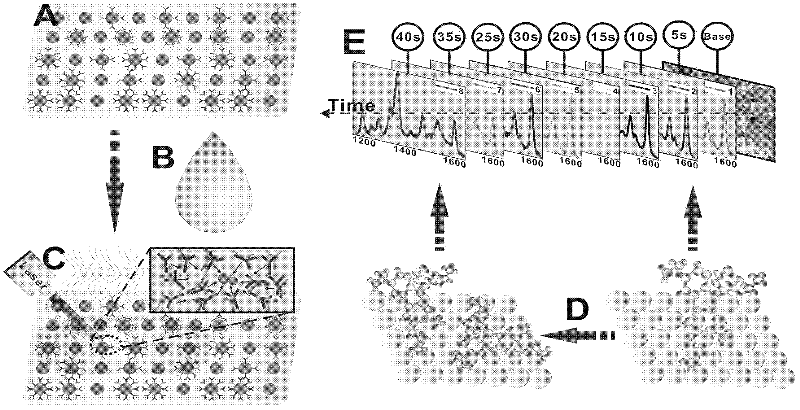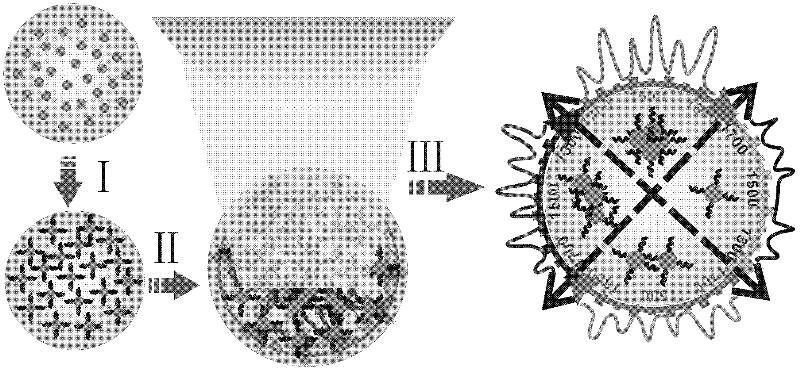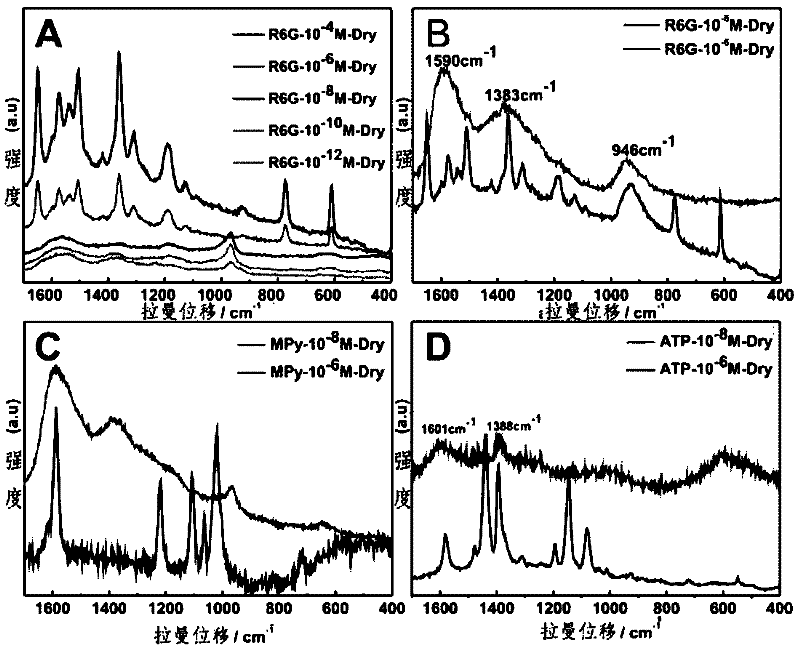Dynamic Surface Enhanced Raman Spectroscopy Detection Method
A surface-enhanced Raman and spectral detection technology, which is applied in the field of analysis and detection, can solve the problems of staying, cumbersome operation, and complicated operating conditions, and achieve the effect of high cost investment, high energy consumption, and high sensitivity
- Summary
- Abstract
- Description
- Claims
- Application Information
AI Technical Summary
Problems solved by technology
Method used
Image
Examples
Embodiment Construction
[0069]
[0070] Experimental result one:
[0071] The present invention adopts the SERS substrate preparation scheme reported in the literature "Facile size-controlled synthesis of silver nanoparticles in UV-irradiated tungsosilicate acid solution", based on the traditional SERS test scheme, for rhodamine (R6G), 4-mercaptopyridine (4 -ATP), p-aminothiophenol (4-ATP) detection limit can not exceed 10 -6 M, the test results are shown in image 3 .
[0072]
[0073] Experimental results two,
[0074] One of the detection methods of dynamic surface-enhanced Raman spectroscopy, ethanol is added dropwise to the SERS sedimentation bottom containing the target molecule to be detected, and then the signal of the target is detected under the Raman spectrometer. Using this method to detect R6G, the test results are significantly better than image 3 The traditional SERS test scheme in , the results can be seen in Figure 4 .
[0075] by comparison Figure 4 and image 3 , it ca...
PUM
 Login to View More
Login to View More Abstract
Description
Claims
Application Information
 Login to View More
Login to View More - R&D
- Intellectual Property
- Life Sciences
- Materials
- Tech Scout
- Unparalleled Data Quality
- Higher Quality Content
- 60% Fewer Hallucinations
Browse by: Latest US Patents, China's latest patents, Technical Efficacy Thesaurus, Application Domain, Technology Topic, Popular Technical Reports.
© 2025 PatSnap. All rights reserved.Legal|Privacy policy|Modern Slavery Act Transparency Statement|Sitemap|About US| Contact US: help@patsnap.com



